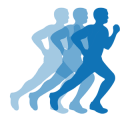Perthes’ disease predominantly impacts boys aged four to ten, although it can occasionally manifest in younger children and teenagers. Common symptoms include fatigue, groin pain, and an observable limp.
Symptoms
Symptoms of Perthes’ disease include:
- Fatigue and pain in the groin, thigh, and occasionally the knee
- Knee pain despite the disease primarily affecting the hip
- Stiffness and limited range of motion in the hip joint
- Limping while walking
- Visible discrepancy in leg length, with the affected leg appearing shorter than the other leg.
Diagnosis
When children experience knee or hip pain, prompt medical evaluation is crucial. A medical professional may use a variety of diagnostic methods to determine the underlying cause. X-rays, although common, might not show abnormalities in the disease’s initial stages.
Therefore, for a more accurate diagnosis, doctors may resort to alternative investigations like MRI or bone scans. Early diagnosis is essential to prevent potential long-term complications.
What is Perthes’ disease?
Perthes’ disease, often seen in children aged 4-10, disrupts the blood supply to the femoral head, causing it to soften and break down. Over 1-3 years, as blood supply returns, the femoral head reforms, but it may not regain its previous spherical shape, leading to potential issues such as decreased joint mobility and arthritis.
Symptoms typically affect one hip, but can occasionally involve both. Boys are more susceptible, yet girls may experience more severe symptoms and complications. The exact cause remains unknown.
Treatment and management of Perthes’ disease
Depending on the severity and age, Perthes’ disease treatment can vary from rest and specific exercises to maintain hip mobility, to bed rest, crutches, traction, casts, braces, or surgery in severe situations.
With proper management, the condition resolves over time, permitting a return to sports once symptoms disappear. Careful management of the disease is crucial to prevent complications like arthritis from irregular joint surfaces.
